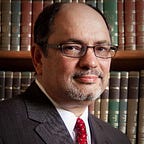History of Halloween: the Sacred and the Secular
Halloween (Allhallows Even) is the evening of October 31. In its strictly religious aspect, this occasion is known as the vigil of Hallowmas or All Saints’ Day, November 1, observed by the Roman Catholic and Anglican churches. In the fourth decade of the 8th century, Pope Gregory III moved this holiday to the present date (from May 13) for celebrating the feast when he consecrated a chapel in St. Peter’s Basilica in Rome to all the saints. Later, Gregory IV extended the feast to the entire church in 834. In Latin countries in Europe, the evening of October 31 is observed mainly as a religious occasion, but in Great Britain, Ireland, and the United States, ancient Halloween folk customs persist alongside the ecclesiastical observance.
Halloween is the second most popular holiday in the U.S. after Christmas — at least according to retailers — but it is the first in terms of candy sales. Not only are candy and costumes popular purchases, but increasingly, houses are being decorated with “Halloween lights.” Parties are popular and are increasingly being celebrated the weekend before.
- In Boston, for example, Salem is a popular location for these with its month-long Haunted Happenings celebrations — due to the Salem Witch Trials of 1692 — and the Massachusetts Turnpike traffic signs point out that Salem can be reached from Boston via Route…
